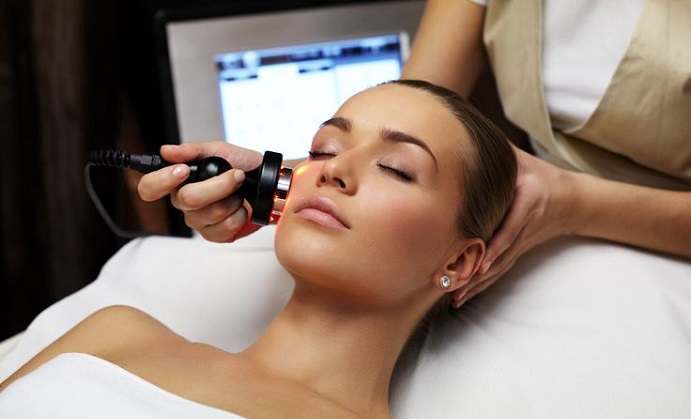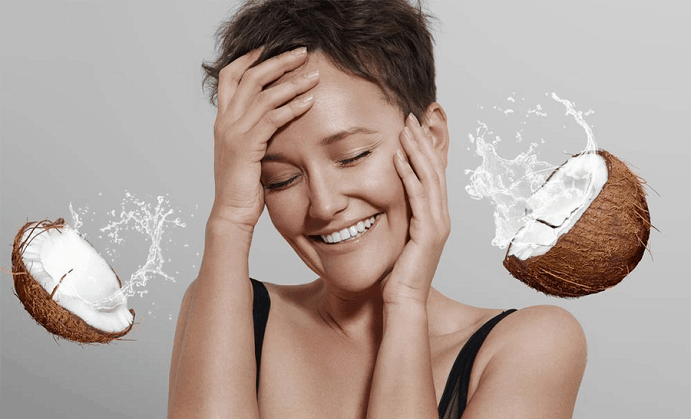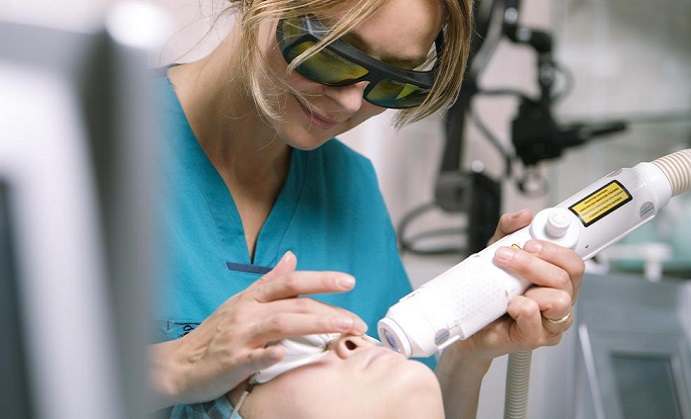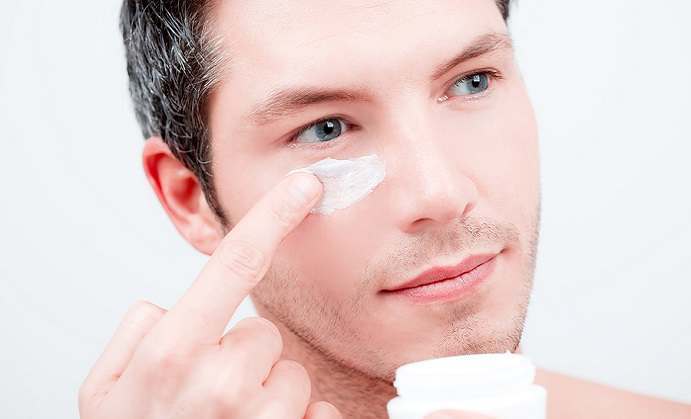Anyone suffering from an outbreak of acne and particularly those who have acne scars feel alone and horribly conspicuous. The truth is that you are not alone. Hormones and genetics cause over forty million people to experience acne every year. Eighty percent of these cases affect adolescents and young adults, while twenty percent occur in adults over thirty.
 Acne occurs when oils naturally produced by the sebaceous glands clog the tiny pores where hair follicles are. These clogged pores can remain small and barely noticeable, or they can become inflamed, even infected and leave scars.
Acne occurs when oils naturally produced by the sebaceous glands clog the tiny pores where hair follicles are. These clogged pores can remain small and barely noticeable, or they can become inflamed, even infected and leave scars.
If life has left you with acne scars, don’t be discouraged because there are treatments. I wish I could honestly tell you that with treatment your scars will disappear, but unfortunately scarring is permanent. There are a variety of treatments, though, which can make your scars less noticeable. In order to help you understand the treatments better, allow me to explain to you the distinct types of scars that acne leaves behind.
Acne’s Distinctive Scars
- Macules or Pseudo-Scars – These are the most common scars left by acne, and thankfully they are not true scars. They are simply flat spots, ranging in color from red to brown, which disappear in a matter of weeks.
- Hyperpigmentation – People of African, Asian and Latino bloodlines are particularly susceptible to hyperpigmentation in areas where they had acne. These dark spots of excess pigment are a result of their body’s inflammatory process. Hyperpigmentation fades away over a period of months and in rare cases, years.
- Hypertrophic or Keloid Scars – These are true scars and they occur when the body produces too much scar tissue at the site of the acne lesions. Instead of simply filling in the depressions left by acne, the body builds up the scar tissue to form a raised, firm scar.
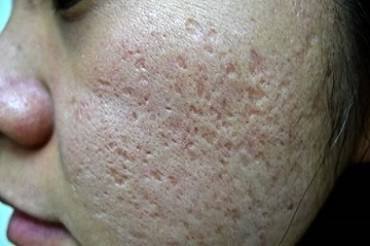 Depressed or Pitted Scars – Long-term acne, and in particular cystic acne, can leave behind “craters”. These craters can be deep with clearly defined edges or shallow with indistinct edges. In both cases, the pitting remains because the body has made a layer of scar tissue beneath the depressions, and this prevents healthy tissue from filling in the craters.
Depressed or Pitted Scars – Long-term acne, and in particular cystic acne, can leave behind “craters”. These craters can be deep with clearly defined edges or shallow with indistinct edges. In both cases, the pitting remains because the body has made a layer of scar tissue beneath the depressions, and this prevents healthy tissue from filling in the craters.
A wide variety of treatments are available for acne scars.
Some of these treatments can be done at home and are reasonably priced, while others are expensive and require a skilled dermatologist or cosmetic surgeon. Which treatment you choose is going to depend on the severity of your scarring, what results you would like see and how much you are willing to spend. Below is a list of the most common treatments for acne scars. I am going to try and list them from the simplest all the way up to the most complex.
Treatments for Acne Scars
 Retinoic Acid – Retinoic acid is a metabolite of Vitamin A. It was first licensed to treat acne and its scars in 1971. The acidity of retinoic acid removes the top layer of skin cells and can lighten macules and some cases of hyperpigmentation. It has little effect on acne’s true scars.
Retinoic Acid – Retinoic acid is a metabolite of Vitamin A. It was first licensed to treat acne and its scars in 1971. The acidity of retinoic acid removes the top layer of skin cells and can lighten macules and some cases of hyperpigmentation. It has little effect on acne’s true scars.- Chemical Peels – Many consider retinoic acid to be mild. Chemical peels produce the same effect of removing the top layer of skin cells, but they are more aggressive, produce results quicker and sometimes even penetrate deeper into the skin.
- Microdermabrasion – This treatment is usually done in a doctor’s office and consists of spraying the skin with tiny exfoliating crystals, which remove the top layer of skin and impurities. Some people will experience redness and mild discomfort after the treatment, but these side effects usually disappear within a few hours.
- Dermabrasion – This is a more aggressive form of microdermabrasion. Instead of using exfoliating crystals, the doctor will administer local anesthesia and then remove the outer layer of skin and try to smooth out irregularities with an abrasive wheel or brush. There is inflammation and discomfort following this treatment, but your doctor will prescribe the necessary medications and he/she will advise you about how to care for your skin during the healing process.
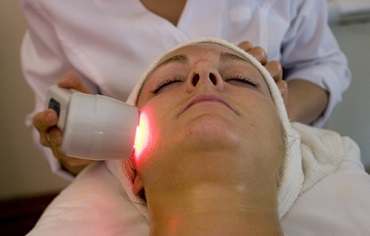 Laser Treatment – Unfortunately, this is an expensive form of treatment. One laser treatment can cost over a thousand dollars, and sometimes more than one treatment is necessary. Doctors can use a laser in two different ways. They can simply remove the top layer of skin or they can focus the laser on the build up of scar tissue. The laser penetrates the skin causing the scar tissue to break down and then the body steps in to replace it with new, healthier cells. Laser treatment can cause minor swelling, redness and in rare cases bruising.
Laser Treatment – Unfortunately, this is an expensive form of treatment. One laser treatment can cost over a thousand dollars, and sometimes more than one treatment is necessary. Doctors can use a laser in two different ways. They can simply remove the top layer of skin or they can focus the laser on the build up of scar tissue. The laser penetrates the skin causing the scar tissue to break down and then the body steps in to replace it with new, healthier cells. Laser treatment can cause minor swelling, redness and in rare cases bruising.- Dermal Fillers – There are various gel-like substances which can be injected into pitted acne scars. These fillers plump the depressed skin and help it to blend into the surrounding healthy skin. Sometime the fillers cause abnormally high bumps after the procedure, but these level out with time. The body does eventually absorb dermal fillers, so the treatment must be repeated every six months to a year.
- Surgical excision and grafting – People who have particularly deep acne scars may benefit from surgery. In surgical excision, the surgeon completely removes the scar and then carefully closes the incision with stitches. The incision will leave a small scar, but the hope is that it will be less noticeable than the initial acne scar. When the removal of the acne scar leaves an incision that can not be pulled closed, the surgeon will graft in a piece of healthy skin.
I hope this article has helped you to understand the different types of acne scars and also the different treatments available to you. As you consider treatment, don’t hesitate to speak with a professional. Their years of study and experience can help you zero in on the treatment that will give you the best results.
Do you want to find an effective Scar Repair treatment? Check out our top rated Scar Repair products








